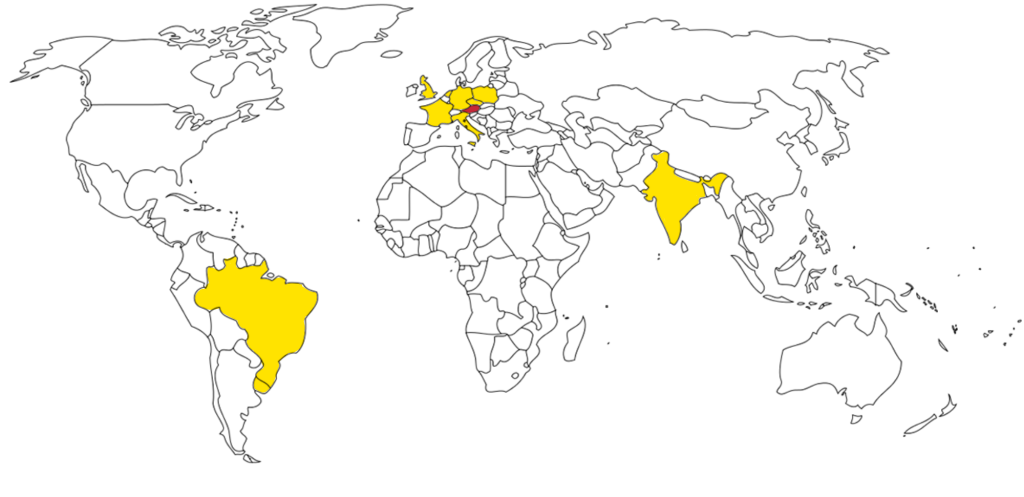Very Rare Subtype of Childhood Leukemia Characterized
A team at the St. Anna Children’s Cancer Research Institute (St. Anna CCRI) has headed an international collaborative study to characterize a very rare subtype of childhood B-cell acute lymphoblastic leukemia. The results, recently published in the journal Leukemia show that patients with this subtype need optimized therapy.
The treatment of B-cell acute lymphoblastic leukemia (B-ALL), the most common cancer in children and young adolescents, is a success story of modern medicine with cure rates approaching 90%. However, despite these achievements, irrespective of the treatment protocols used, 10-15% of patients still face relapse and subsequently a poorer prognosis, as only about 50% of all children with relapsed ALL can be cured. Therefore, to further improve outcome, it is essential to filter out subtypes of the disease with high relapse rates and to optimize front-line treatment.
In this international study 50 patients with a very rare genetic subtype harboring a PAX5::AUTS2 fusion gene who were treated with different therapy protocols were collected. Outcome analysis showed that the 5-year cumulative incidence of relapse for all patients was 48.0±7.8% and the event-free and overall survival rates 47.9±7.6% and 76.2±7.1%, respectively. The main risk factors were a younger age below 18 months and measurable residual disease after the first weeks of treatment.
International Collaboration is Key to Success
“Our study shows that patients with PAX5::AUTS2 B-ALL have a very high relapse rate and consequently a rather poor overall survival. Notably, especially infants and toddlers are affected by this disease subtype, with over 80% of patients under the age of three, and in many patients the disease spreads to the central nervous system,” explains Sabine Strehl, Principal Investigator at St. Anna CCRI, the disease characteristics. This subtype of B-ALL is so rare that it has so far not been described in detail, and it has taken a major international effort to collect sufficient cases for meaningful analysis.

“Fifty cases may sound like a limited number, but for a rare childhood leukemia entity it is quite a lot, and every single case counted. Without the excellent collaboration between several European countries, especially with France, who contributed most patients, Italy, Poland, the Netherlands, Germany, the United Kingdom and the Czech Republic, as well as with Brazil, India, and Uruguay this study would not have been possible” adds Sabine Strehl.
The detailed analysis of the data showed that even in PAX5::AUTS2 leukemia patients enrolled in contemporary clinical trials, the relapse rate did not improve, indicating that these patients need special attention and that front-line treatment with the most advanced therapy options needs to be considered.
“This study will help to further improve the cure rates of childhood leukemia and ensure that every patient, no matter how rare their disease subtype, receives the most appropriate therapy,” concludes Sabine Strehl, who has long been interested in the prognostic relevance of rare genetic alterations in leukemia.
Publication:
Caye-Eude A, Fazio G, Pastorczak A, Boer JM, Steinemann D, Ganguli D, Sonneveld E, Haslinger S, D’Andrea L, Bradtke J, Lopes BA, Zaliova M, Escherich G, König M, Fortschegger K, Inthal A, Stasevich I, Emerenciano M, Trka J, Castillo L, Parihar M, Moorman AV, Bergmann AK, den Boer ML, Młynarski W, Cazzaniga G, Cavé H, Nebral K, Schinnerl D, Strehl S. PAX5::AUTS2 childhood B-ALL: a relapse-prone genetic subtype with frequent central nervous system involvement and a poor outcome. Leukemia. 2024 Dec 19. doi: 10.1038/s41375-024-02502-5.